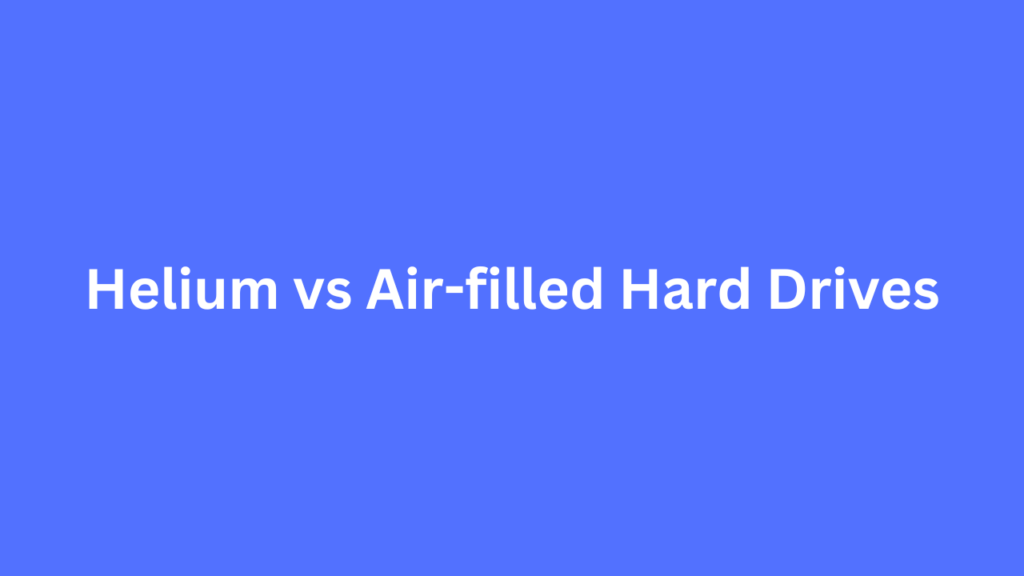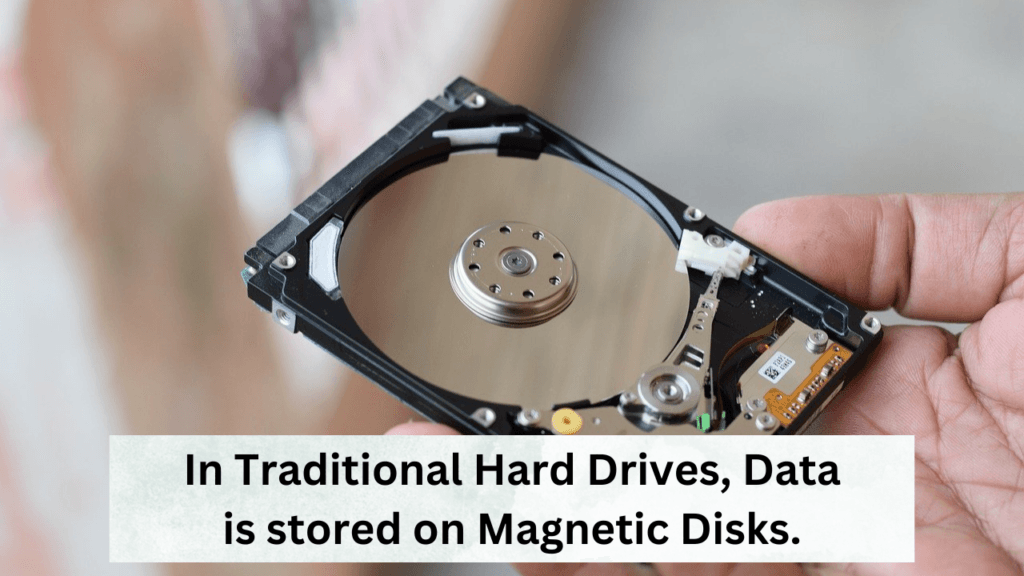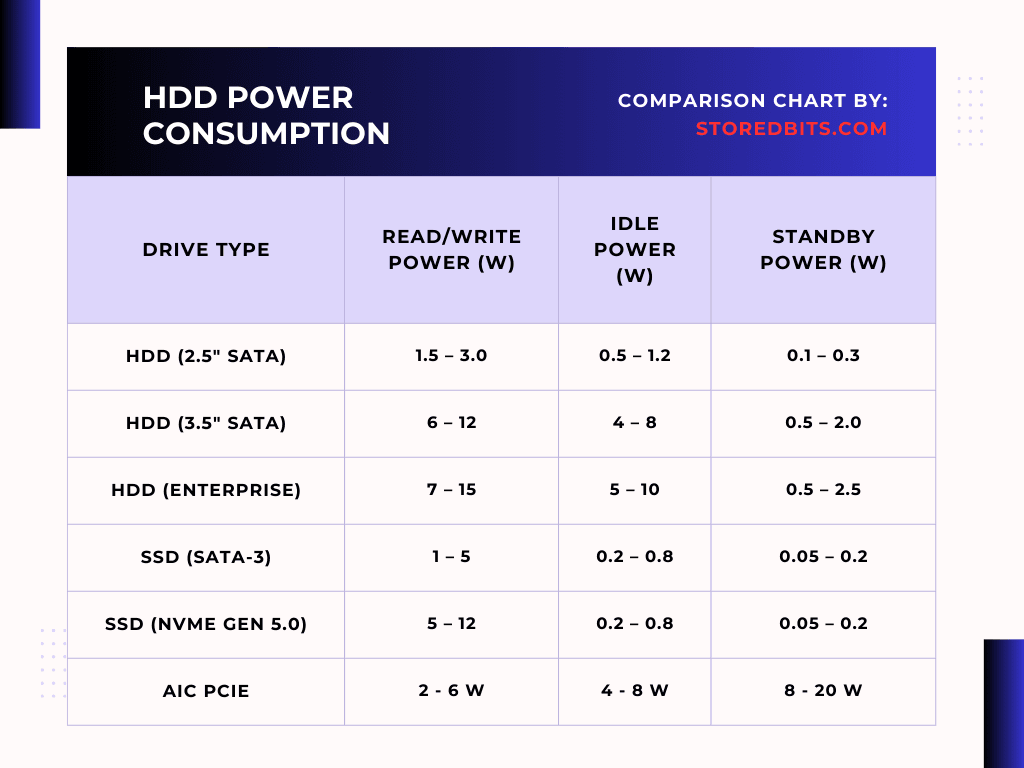Helium is the second-lightest naturally occurring gas in the universe with a molecular weight of 4.00 g/mol. The oxygen ranks at number eight with 32.00 g/mol. If we talk about the density, the helium is approximately 0.1786 g/L while air is 1.225g/L. Oxygen alone has a much higher density i.e. around 1.429 g/L. The common mixture of air that we breathe is filled in air-filled hard drives. However, there are helium hard drives where the case is packaged with the helium gas.
In terms of performance and power-saving, helium-filled hard drives have numerous benefits compared to air-filled hard drives. On the other hand, because air-filled drives are less complex to manufacture, they beat the helium drives in terms of pricing.
Hard Drives store the data on magnetic platters. These platters must rotate at a breakneck speed while reading and writing the data. Most of the modern hard drives can spin at 5400 or 7200 RPM. To achieve this, very high-speed DC motors are used. The platters are aerodynamic. Their surface is smooth. But, air drag always occurs when these disks move at high RPMs. Helium gas comes into the scene here to reduce the air drag and turbulance hence contributing to a lower power consumption and increased capacity. Let’s understand how.

The concept of air drag in hard drives
To spin the platters, the motor must put effort and consume power due to their weight and high rotational speed. However, another opposing force becomes significant at higher RPMs called the air drag. Although the platters have smooth surfaces, the surrounding air creates resistance as they spin. To overcome this, the motor must work more, leading to additional power consumption.
As we discussed earlier, the air is heavier than the helium. This simply means the air has a larger molecule size which creates a higher air-drag. Also, because the air resistance is higher, the platters feel turbulence.

Benefits of Helium-Filled Hard Drives
Helium has a lower density than the air, i.e. 1/7th that of air. So, when a platters or multiple platters rotate in the presence of helium gas, instead of air, they experience less air-drag. This results in lower turbulence, lower power consumption, and higher data read/write accuracy. Higher accuracy because the turbulence is low and this results in a better contact of read/write heads to the specific data locations.
So, all in all, helium-filled hard drives are great for reducing hard drive efficiency, and increasing performance, and accuracy.
Along with that, helium is a better dissipator of heat and results in better thermal conductivity helping with a better drive cooling. Because of less vibration and noise, the helium hard drives run much more quietly.
According to this article by Backblaze, helium-filled hard drives consume 20% less power compared to normal hard drives due to lower drag. The same article says that the air-filled drives had a higher AFR (Annual Failure Rate) of 1.60% vs the helium drives with 1.06%.
Comparing air-filled vs helium-filled hard drives
| Feature | Air-Filled Hard Drives | Helium-Filled Hard Drives |
|---|---|---|
| Density of Medium | Higher density (air) creates more resistance. | Lower density which reduces resistance and drag. |
| Storage Capacity | Typically lower, maxing out around 10TB-12TB. | Higher capacities available (up to 22TB+). |
| Number of Platters | Limited due to air resistance (usually 5-7 platters). | Can accommodate more platters (7-9), increasing storage. |
| Power Consumption | Higher due to increased friction and resistance. | Lower (up to 20% less power per TB) due to reduced friction. |
| Heat Dissipation | Generates more heat due to air turbulence and friction. | Better thermal efficiency and lower operational temperatures. |
| Noise & Vibration | Noisier due to higher turbulence, drag, and mechanical resistance. | Quieter operation and less vibrations. |
| Performance (Speed) | Moderate speeds, but more friction limits maximum RPM efficiency. | Faster due to reduced drag. |
| MTBF (Mean Time Between Failures) | Comparitively lower lifespan due to increased wear and tear. | Higher reliability with longer MTBF. |
| Cost | Comparatively lower lifespan due to increased wear and tear. | More expensive due to the need for a hermetically sealed enclosure. |
| Sealing & Leakage Risk | No special sealing required; air can enter and exit freely. | No special sealing is required; air can enter and exit freely. |
The challenges with helium-filled hard drives
Because helium is a light gas, it makes it prone to leakage. If too much helium escapes the casing, it would result in reduced efficiency or even failure. Even though the sealing technology is almost perfect, any imperfection can lead to leaks.
Another issue is the higher manufacturing cost mainly because of the additional steps of sealing. This also makes these hard drives hard to refill in case of leakage.
The supply of helium can result in price fluctuation and because it is a non-renewable gas, the prices tend to change often.
Why Helium?
Helium is called a noble gas means it will not react with anything inside a hard drive. There are other lighter gases such as hydrogen, Argon, and Neon. But, the issue with hydrogen is that it’s highly flammable. Neon is expensive and Argon is heavier than Helium. Helium fits the best because it’s not reactive, is lighter in weight, and maintains a sealed environment pretty effectively.
Because helium is a noble gas which is chemically inert, it ensures a long-term stability along with prevention of corrosion and oxidation of internal components.
Are all hard drives filled with helium?
Not all the modern hard drives are filled with helium. These drives are mainly used in enterprise applications and server environments. Usually, the drives having capacities over 10TB tend to have helium gas inside them. Some popular helium hard drive series are WD (Ultrastar series), Seagate (Exos series), and Toshiba (MG) series.
Most consumer hard drives generally having capacities below 10TB are air-filled. They are generally lower in cost and have simple designs. Some people’s air-filled drive series are WD (Blue and Black series), Seagate (Barracuda), and Toshiba (P300 and X300).



